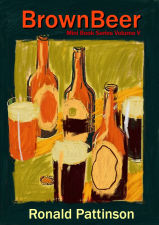More from the correspondence between Jacobsen father and son. It's such fun. For me, if for no-one else.
The following is taken from a letter of 1870-02-03 from J. C. Jacobsen to Carl Jacobsen.
First he talks about malt.
The floured Scottish barley from last year, from Younger, particularly impressed our farmers, mostly landlords.- I still kept a little of it, but if you can get a small sample (in a bottle) of similarly floured barley in Burton, it would not hurt to have it for reference at another opportunity.
The Danish farmers were impressed by Scottish barley, but rather bemused by the use of Chilean barley. Something which was very common in UK brewing.
They were also surprised to see the rather narrow and spiked Oderbruck barley and to hear that such barley was sought after in England. Here, they believe that a high weight is the one decisive factor. They could not understand at all that an English brewer could use such chili barley, which I showed them the malt from, and I really do not understand how it is profitable to malt such barley with a malt tax of 21 sh 9d per quarter. It must be extremely cheap. Do you know the price of it? What barley does Evershed use? and what is the price now in Burton? They use as simple barley there as in Edinburgh.
Yes, Chilean barley was cheap. But not ridiculously cheap. It also had some characteristics - such as nitrogen and protein content - which mad it a good complement to UK barley.
The next bit I found particularly interesting.
I had the company of Tietgen at the table. He strongly recommended visiting the Porter breweries, especially Guinness in Dublin, and then visiting Drogheda (pronounced Droggeda), whose mild ales were famous and cheap. They found a large market, among others, in Liverpool and Manchester. When I expressed my surprise that you had not mentioned Drogheda's beer, he said that the English, out of jealousy of the Irish, tried to ignore it.- He also advised an excursion from Dublin to Waterford, where there, as in several places in Ireland, was a very interesting church from the time of the Danes and the road to it led through the most beautiful parts of Ireland.- But we will hardly have time for that this time.
Guinness Stout was already pretty famous by this point But Drogheda Mild Ales? That's a surprise. It was a pretty small town and brewers there, such as Cairnes, were wuite small.
A church dating back to the time of the Vikings in Ireland must have been pretty old.








 16:
16:






















































































